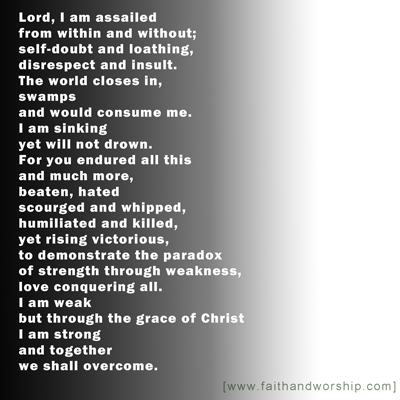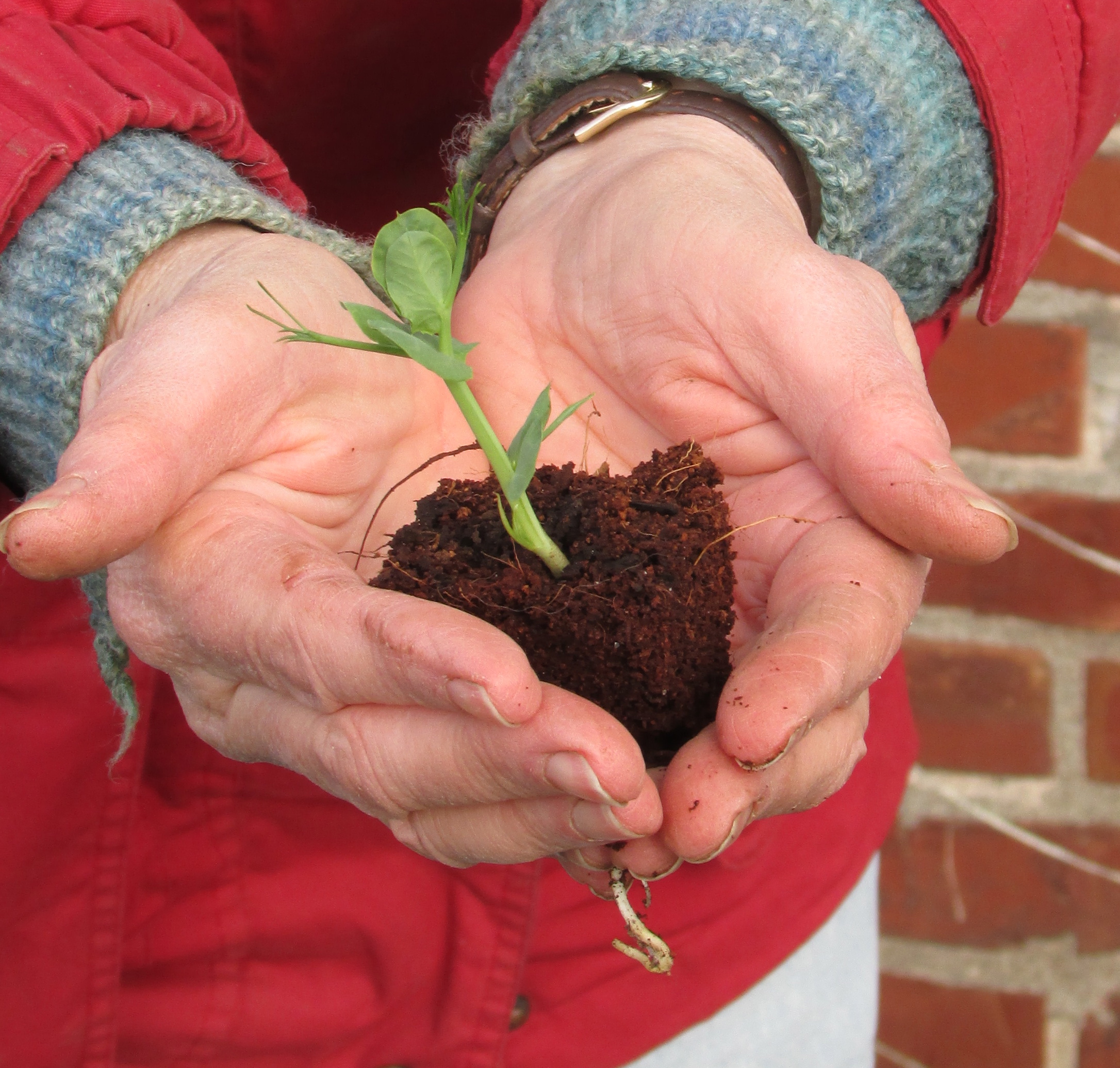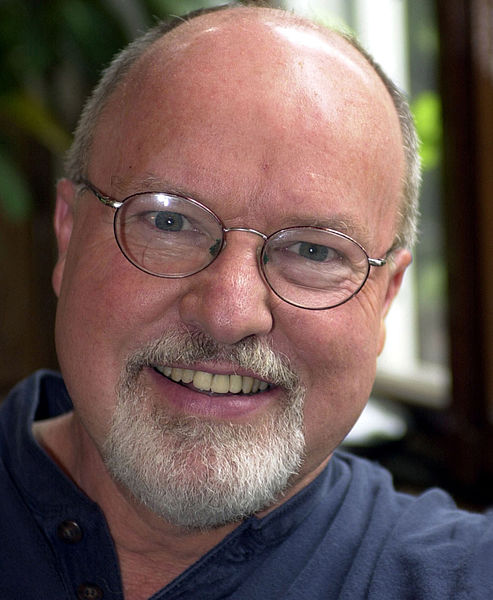Friday is International Women’s day and it seemed appropriate to reblog this beautiful prayer that I came across last year. It also makes a beautiful Lenten prayer
Lord, make me an instrument of peace:
Bless all women who daily strive to bring peace to their communities, their homes and their hearts. Give them strength to continue to turn swords into plowshares.
Where there is hatred, let me sow love:
We pray for all women who face prejudice, inequality and gender disparities. Help us seeand to face the discrimination against women inall the many forms it may take.
Where there is injury, pardon:
Comfort all women who suffer from the pain of war, violence, and abuse. Help them to become instruments of their own reconciliation and peace.
Where there is division, unity:
Forgive all women and men who let differences breed hate and discrimination. Let your example of valuing all of creation help us to see that we are equal partners in the stewardship of your world.
Where there is darkness, light; where there is untruth, truth:
Comfort all women who struggle in the darkness of abuse, poverty, and loneliness. May we stand with them in light to acknowledge their suffering and strive to remove the burdens of shame or embarrassment.
Where there is doubt, true faith:
We pray for all women who live in fear of their husbands, fathers, and forces that control their lives. Help them to be empowered to be their true selves through your everlasting love and faith.
Where there is despair, hope:
We pray for all women who live in the despair of poverty, violence, trafficking, slavery,and abuse. May the light of your love bring them hope.
Where there is sadness, new joy:
Help us to see the strength and goodness in all women and men.
Transform our hearts to celebrate the love and grace of all people.
And may we be blessed with the courage of St. Clare of Assisi to follow our own path of love for you and all sisters and brothers.
Today’s post in the series Return to Our Senses in Lent is written by Christopher Heuertz. It is an excerpt from his latest book Unexpected Gifts: Discovering the Way of Community. I have just finished reading this book and loved it. Chris describes himself as a curator of unlikely friendships, an instigator for good, a champion of collaboration and a witness of hope. He fights for a renewal of contemplative activism.
Friday March 8th is International Women’s Day. The theme for this year is The Gender Agenda: Gaining Momentum and I felt that this was a very important story to share in relation to that.
My favourite part of every Sari Bari blanket is the patches.
Sari Bari is a small business initiative that seeks to secure freedom and restoration in the red-light areas of Kolkata, India. It offers dignity-ascribing employment opportunities to women exploited by the commercial sex industry.
The name Sari Bari comes from two symbols. A sari, the traditional garment worn by Indian women, seen by some as oppressive, is an image of what can be reclaimed in a new way. In Bengali, the word bari means “house” or “home”. Sari Bari is a safe home where women who have been exploited in the sex trade can find their humanity restored and experience a new life in the making.
Women are trained to make beautiful quilted scarves, and purses and offered jobs in the Sari Bari community centers as a way out of prostitution. The products they sell are made from old, recycled saris, a symbol or restoration. Tossed-aside or thrown-away saris are recovered and cleaned. Something that appears used up, discarded, valueless is artfully transformed into something beautiful-even more, something valuable.
These products symbolize restoration. The process is a prophetic image of what the Sari Bari community is doing within the sex trade – allowing women who have been victimized and abused to recover their true identity….
Stitched onto every blanket, if you look hard enough, you’ll discover tiny patches cut our of the same material the sari quilt is made from. Some of the little patches are intricately sewn so that the pattern of the quilt lines up perfectly with the pattern on the patch. Other times, the patches stand out, a bold statement of colour that enhances the quilt’s design.
Generously added to some, sparingly to others, these little patches add a gorgeous layer of texture.
One day while with the women, sitting on the floor of one of the Sari Bari community centers, I was admiring their work and pointing out the patches, trying to communicate how beautiful I found them. Upendra, one of the English-speaking staff, overheard my fumbling attempt to get my ideas across and helped translate. He laughed our loud when he understood what I was trying to say.
He explained that each finished blanket is washed before being packaged. After they’ve been washed and dried, there’s a quality control check before they’re shipped. It turns out that the patches aren’t added to make the blankets more beautiful but to cover the flaws and tears on every quilt; they’re an inevitable part of recycling and restoring each sari blanket.
Even more ironic, the women hate having to go back and repair their work. The patches are time-consuming and tedious. Yet it’s the patches that make the quilts so beautiful and unique.
As is the case with us. In our own freedom , we still go about making mistakes, disappointing ourselves and others, living with guilt, shame, regret, or fear that the consequences of our worst moments will catch up to us. any of us have a hard time accepting the flawed parts of ourselves when we’re alone – a struggle that’s even more difficult when we’re in community.
Today’s prayer was written by John Birch at Faith and Worship. I find it both challenging and compelling
Today’s post in the series Return to Our Senses in Lent is written by James Prescott. James is a writer and author from Sutton, near London, UK. He blogs regularly on his own blog JamesPrescott.co.uk. He recently released his first e-book, ‘5 Steps to Encouragement: A Manifesto for Changing the World’ which can be obtained free here.
We are now into March. Overnight, it seems, the sun has come out. It shines anew, providing fresh warmth and life to the world. Where only weeks ago, the world seemed lifeless and gone, suddenly there are leaves on trees. Fresh, green, and full of life and potential.
Spring has arrived. Even in my physical body, I find myself getting slightly ill due to the changing of the climate.
We are all transitioning.
There are approximately three months between Christmas and Easter in the liturgical calendar. Three months between birth and death, and resurrection.
Three months. The same number of days Jesus was in the tomb.
And the rest of the year is nine months. The amount of time between the conception and birth of a baby.
Is this simply a coincidence? No.
For nine months there is expectation. Preparation. Living our lives in what is called ‘ordinary time’. And in this period we go from spring, the beginning of new life, to autumn and winter, the end of all life. And it is just as we hit the pinnacle of this, the shortest day, we find a new beginning.
Christmas. The coming of our Saviour. He brings new life, new beginning, new purpose and hope. For three months we focus on the life of Jesus, from beginning to painful end, and resurrection. And by the time of resurrection, new life has come all around us again.
Three months from the centre of nature’s death, to the beginning of new life. Like three days from Calvary to open tomb.
It’s strange to say it, but there is so much of calvary in Christmas. And not just in the myrrh which anoints a dead body, but in the world. There is death. More darkness. Coldness in the air (certainly in the UK winter, anyhow).
But then Jesus comes in. And within three months, life is here again in all its fullness, right about the time we celebrate resurrection.
So much of what we see in nature reflects the story of God. Even the time periods of three months and nine months have a meaning beyond the surface.
There is a cycle of birth, life, and death. And then rebirth.
And the time in between.
40 days – the traditional length of Lent, the time Jesus was in the desert, is statistically the amount of time it takes a human being to learn a new habit. If someone adopts a new habit and practices it each day for 40 days, then it will become habit.
Is it a coincidence Jesus was in the desert 40 days? Or that Lent is 40 days?
No. Because in Lent God wants us to adopt new habits. To re-orientate our lives around Him.
His story. His timetable. His plan.
And as we look at this theme of finding God in nature, let us make it a habit to look for God in every part of creation. The sunlight, the lengths of the days, the timings of the seasons.
Let us look to the rhythm of creation and find in its midst a model for God’s rhythm for us.
Light and darkness. Death and rebirth. Adopting new rhythms.
The rhythm of creation is the rhythm of God. It is the rhythm He wants us to adopt, to live our lives by. Much more than any religious or legalistic calendar we can devise. Let us open our eyes and see God right in our midst, in the rhythms of creation itself.
And we may find an intimacy and experience with God we have never seen before.
This morning I was contacted by the 24-7 prayer network about using this prayer for their five city prayer pilgrimage for the new Archbishop of Canterbury. I was delighted because this is not only one of my favourite prayers, but because I strongly believe that the formation of community based on friendship and mutual care is one of the keys to Christian formation – something that is very important for us to think about during this season of Lent.
What are you doing during this Lenten season to strength your local and global community?
Today’s post in our series Return to Our Senses in Lent, are words of wisdom from Richard Rohr. As many of you know I am very keen on breathing prayers, but it was Richard’s work on the Yahweh prayer that really inspired me. Make sure that you watch both these videos as the second is a continuation of the first and in many ways was the most inspiring for me.
—————————————————
The Jewish name for God – Yahweh – was not spoken, but breathed. Its correct pronunciation is an attempt to imitate the sound of inhalation and exhalation. We do that every moment: our first and last word as we enter and leave the world…. The one thing we do every moment of our lives is therefore to speak the name of God. This makes it our first and our last word as we enter and leave the world. (Richard Rohr: The Naked Now)
Tom and I are just back from our quarterly retreat and I just realized I have not posted a Lenten reflection for the day. So I hope you will all forgive me if I just posts the Lenten prayers that have been added to Light for the Journey over the last week. So many of them carry a sense of our pilgrimage towards the Cross that it seemed an appropriate addition to our Lenten reflections.
God we were blind but you open our eyes,
To see your glory revealed,
The wonder of your Son Jesus Christ
Who died and rose again to lead us into life.
God we were deaf but you unstopped our ears,
To hear the power of your resurrection story,
Renewal, transformation and redemption in Christ.
God we were dumb but you set free our tongues,
To rejoice and sing with all the hosts of heaven,
Holy, holy, holy is the one
Who transfigures the world with the spirit of life.
————————-
Lord Jesus Christ we worship you today.
You who are a king like no other,
We give you praise.
Born as a human child,
Raised as a refugee,
Friend of prostitutes and the marginalized.
Not seeking power and privilege,
but willing to walk the path of suffering,
To die the death of shame,
Upon a cross, crowned with thorns.
A servant king washing feet, embracing kids,
A loving God,
holding close when we stumble,
A caring and forgiving saviour,
Transforming, renewing, making all things whole,
We stand in awe of you
And give you thanks.
—————————————–
Let God sweep you up into the eternal embrace today,
Let the Son drench you with the presence of the Holy One,
Let the Spirit fill you with the life of the all loving One.
Be graced with the forgiveness of God,
Assured of the redemption of the risen Christ,
Trusting in the infilling of the Spirit.
Remember the gft of God’s Son and give thanks.
———————————————
You do not give up on us
though we might wander far,
you do not give up on us
but love us as we are
you do not give up on us
but died that we might know
you do not give up on us
because you love us so.
As an Amazon Associate, I receive a small amount for purchases made through appropriate links.
Thank you for supporting Godspace in this way.
When referencing or quoting Godspace Light, please be sure to include the Author (Christine Sine unless otherwise noted), the Title of the article or resource, the Source link where appropriate, and ©Godspacelight.com. Thank you!






